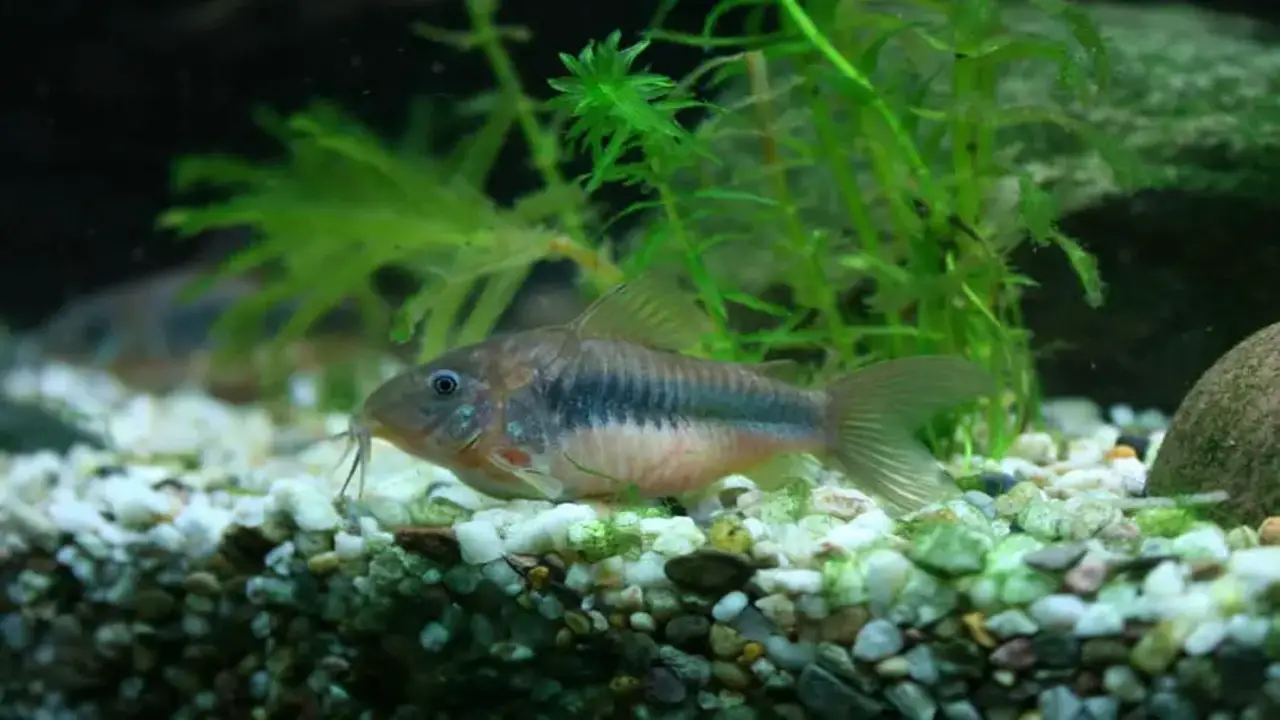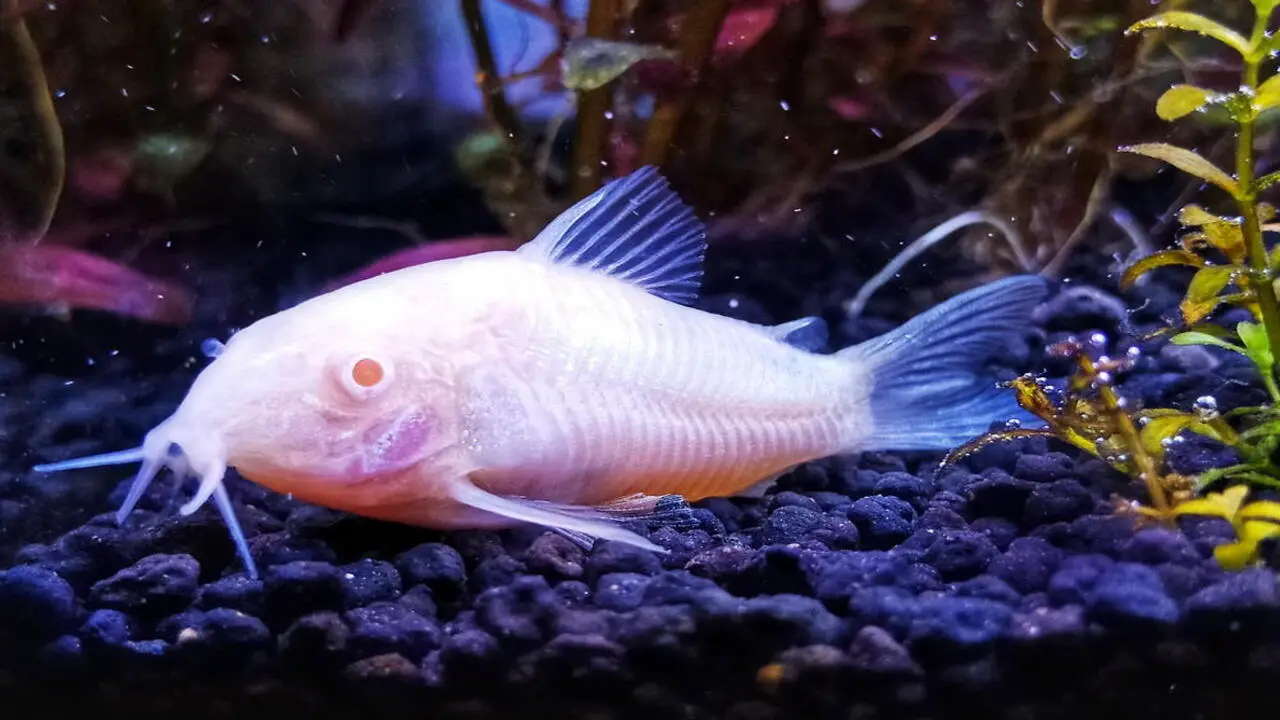Cory catfish are popular freshwater fish known for their peaceful nature and active behavior. They make great additions to community tanks and are often kept in groups.
However, many aquarium owners may not realize that there are significant differences between male and female cory catfish, both in appearance and behavior. Understanding these differences can help aquarium owners provide the best possible environment for their fish and avoid potential issues such as aggression or breeding problems.
Here, we will explore the key differences male vs female cory catfish, including their physical attributes, social behavior, and breeding habits. We will also discuss how to sex your cory catfish and provide tips for maintaining a healthy and happy tank environment for both males and females. Whether you are a new or experienced aquarium owner, understanding the differences between male and female cory catfish is essential to responsible fishkeeping.

How To Identify Male Vs Female Cory Catfish

Identifying the gender of cory catfish can be challenging, but there are a few key differences to look out for. Males tend to be smaller and slimmer than females, with more elongated bodies. They also have a more pronounced “spade-shaped” anal fin used during breeding. Females, on the other hand, are typically larger and rounder in shape. Their anal fin is usually more rounded and less pronounced compared to males.
Another way to differentiate between male and female cory catfish is by observing their behavior during the breeding season. Males will often exhibit more active and aggressive behavior as they compete for the attention of females. By closely observing these physical traits and behaviors, you can better understand whether your Cory catfish is male or female.
Physical Differences
Some physical differences between male and female cory catfish can help you determine their gender. One of the most noticeable differences is in their size. Male cory catfish tend to be smaller and slimmer than females, while females are generally larger and rounder.
Another difference is in their body shape. Males often have a more streamlined body shape, while females have a fuller abdomen. In addition, males may develop small bristles on their snout, which are used for breeding. These physical differences can be helpful in identifying the gender of your cory catfish and understanding their behavior and reproductive patterns.
Size And Shape Variations
When distinguishing between male and female cory catfish, there are a few key size and shape variations to look out for. Generally, female cory catfish tend to be larger and broader than males. They also have a rounder body shape, while males are typically slimmer and more streamlined.
Additionally, the ventral fins of females may appear wider and more rounded, while males may have longer and more pointed dorsal fins. These subtle differences can help fishkeepers identify the gender of their cory catfish and provide valuable insights into their behavior and breeding patterns.
Behavior
There are some noticeable behavior differences between male and female cory catfish. One key difference is in their size and shape. Male cory catfish tend to be smaller and more slender than females, generally larger and rounder. Another difference is in their behavior during the breeding season.
Males often chase females around the tank, performing a “T-position” where they wrap their bodies around the females. Conversely, females may become more reclusive and retreat to hiding spots to lay their eggs. These behavioral differences can help aquarium owners determine the gender of their cory catfish and provide appropriate care for them.
Differences In Colouration And Markings
When differentiating between male and female Cory catfish, there are a few key differences to look out for. One of the most noticeable differences is in their coloration and markings. Male Cory catfish often have brighter and more vibrant colors compared to females. They may also have more pronounced patterns or markings on their bodies, such as stripes or spots.
In contrast, female Cory catfish tend to have a more subdued coloration and may appear slightly larger or rounder in shape. While these differences can be helpful in distinguishing between males and females, it’s important to note that they may not always be definitive, as individual fish can vary in appearance.
How To Determine The Gender Of Juvenile Or Young Cory Catfish

Determining the gender of juvenile or young Cory catfish can be challenging, as there are no distinctive external characteristics to differentiate between males and females. However, as the catfish mature, specific physical differences become more apparent. One way to determine gender is by looking at the shape of their bodies.
Females tend to have rounder and fuller bodies than males, who typically have slimmer and more streamlined bodies. Observing their behavior during the breeding season can also provide clues about their gender. Males are usually more active and may display courtship behaviors like chasing and nudging females.
Another method is examining the shape of their fins – males often have longer and more pointed dorsal fins than females. It’s important to note that these methods may not be foolproof, so it’s best to consult with an experienced aquarist or veterinarian for a definitive gender determination.
Tips For Identifying Male And Female Cory Catfish In A Community Tank
Cory catfish are a popular freshwater aquarium fish due to their peaceful nature, hardiness, and ability to help keep the tank clean. Importantly, it is possible to tell male and female cory catfish apart, which can be useful for breeders or those interested in maintaining a balanced population in their tank. When identifying male and female cory catfish, there are a few key differences to look out for. Here are some tips that can help you determine the gender of your Cory catfish:
- Size and shape: Male cory catfish tend to be smaller and more slender than females. Females, on the other hand, are typically larger and have a rounder belly.
- The shape of the vent: One way to differentiate between male and female cory catfish is by looking at their vents, which are located near their anal fin. Males will have a more pointed and elongated vent, while females will have a broader and more rounded vent.
- Behavior during breeding: During the breeding season, male cory catfish may exhibit more aggressive behavior as they compete for the attention of the females. They may also develop small tubercles on their pectoral fins or head.
- Coloration: While coloration can vary among different species of cory catfish, males may display brighter or more vibrant colors than females.
It’s important to note that these differences may not be apparent in all species of cory catfish, so it’s always best to do further research or consult with an expert if you’re unsure about the gender of your fish.
Breeding Behaviors And Signs Of Courtship In Male And Female Cory Catfish

Male and female cory catfish can exhibit different behaviors when it comes to breeding. Male cory catfish are often more active and eager to court the females. They may chase the females around the tank, perform elaborate displays, and even make clicking sounds to attract their attention.
Additionally, males may develop specialized structures such as bristles on their faces or enlarged pectoral fins to impress the females. These behaviors and physical characteristics are all part of the male’s efforts to win over a mate and successfully reproduce. By observing these signs of courtship, fishkeepers can gain insight into the gender dynamics within their cory catfish community.
Understanding The Reproductive Anatomy Of Male And Female Cory Catfish
Understanding the reproductive anatomy of male and female cory catfish can be helpful for fishkeepers who are interested in breeding these popular aquarium species. One key difference between males and females is the shape of their bodies. Male cory catfish tend to have slimmer bodies, while females have rounder bodies. Another noticeable difference is the size of their dorsal fins.
Males typically have larger and more elongated dorsal fins compared to females. Regarding behavior, males exhibit more territorial and aggressive tendencies, especially during breeding. During courtship, males may display a “T-position” where they position themselves upside down and wrap their bodies around the female’s abdomen to fertilize the eggs. Understanding these distinctions can help fishkeepers successfully identify the gender of their cory catfish and create suitable conditions for breeding if desired.
Common Misconceptions About Identifying Male Vs Female Cory Catfish
Cory catfish, also known as Corydoras catfish, are popular among aquarium enthusiasts. These small, peaceful fish are known for their social behavior and ability to clean up excess food and debris from the bottom of the tank. There are several common misconceptions regarding identifying male and female cory catfish. Here are a few myths debunked:
- Myth: Males have brighter colors. While it is true that some species of cory catfish exhibit sexual dimorphism, where males have brighter colors, this is not always the case. In many species, both males and females have similar coloration.
- Myth: Females are larger. Again, this is not always true. The size of a cory catfish can vary depending on factors such as species and individual genetics, so it should not be used as the sole factor in determining gender.
- Myth: Males have longer fins. While some male cory catfish may have slightly longer fins than females, this is not a reliable method of sexing them. Fins can also vary in length due to age and health.
To accurately determine the gender of a cory catfish, it is best to observe their behavior during breeding season or consult with an experienced fish breeder or veterinarian who can help identify specific physical characteristics or markings that indicate male or female.
Conclusion
Understanding the differences between male and female cory catfish is essential for fish enthusiasts and breeders. By observing their physical characteristics, size and shape variations, behavior, coloration, and markings, you can accurately identify the gender of your cory catfish.
Additionally, knowing how to determine the gender of juvenile or young cory catfish and understanding their breeding behaviors and reproductive anatomy can help you create a successful breeding environment.
It’s important to note that there are common misconceptions about identifying male vs female cory catfish, so it’s always best to do thorough research and consult with experienced aquarists. With this knowledge, you can maintain a healthy and harmonious community tank and potentially engage in the rewarding experience of breeding cory catfish.
Frequently Asked Questions
How Long Will Cory Catfish Live?
Cory Catfish can have a lifespan of over 5 years, depending on factors like water quality, diet, and tank size. Proper care and maintenance are crucial to increase their longevity, including regular water changes and a balanced diet.
How Many Corydoras Should Be Kept Together?
To ensure the well-being of corydoras, it’s important to keep them in groups of at least six. A general guideline is to have one gallon of water per inch of fish. Be mindful of keeping corydoras with similar temperature and water chemistry requirements. Avoid overcrowding as it can lead to stress, disease, and aggression. Monitor the tank and adjust the number of fish accordingly.
How Do You Tell The Difference Between Male And Female Pygmy Corydoras?
Their size and body shape can distinguish male and female pygmy corydoras. Males are smaller and slimmer, while females have a rounder and wider body. Additionally, males have a more pronounced dorsal fin than females’ shorter and rounder ones. One easy way to determine their gender is by observing their body shape from above.
Is It Better To Keep Male Or Female Corydoras?
When deciding between male or female Corydoras, it’s a matter of personal preference and the specific characteristics of each species. Males are generally smaller and slimmer, while females are larger with a rounded belly. Consider keeping a mix to promote natural breeding behavior.
What Are The Physical Differences Between Male And Female Cory Catfish?
Male and female cory catfish exhibit physical differences. Males are smaller, slimmer, and have longer, pointed fins. Females have a rounder belly, especially when carrying eggs, and shorter, more rounded fins. Some males may also have slightly brighter coloration than females.

Aquarium passion is all about connecting with the aquatic life and providing education to the public on the importance of these creatures. We showcase a wide variety of marine life through our exhibits as well as working with schools to provide unique learning opportunities for students of all ages.









